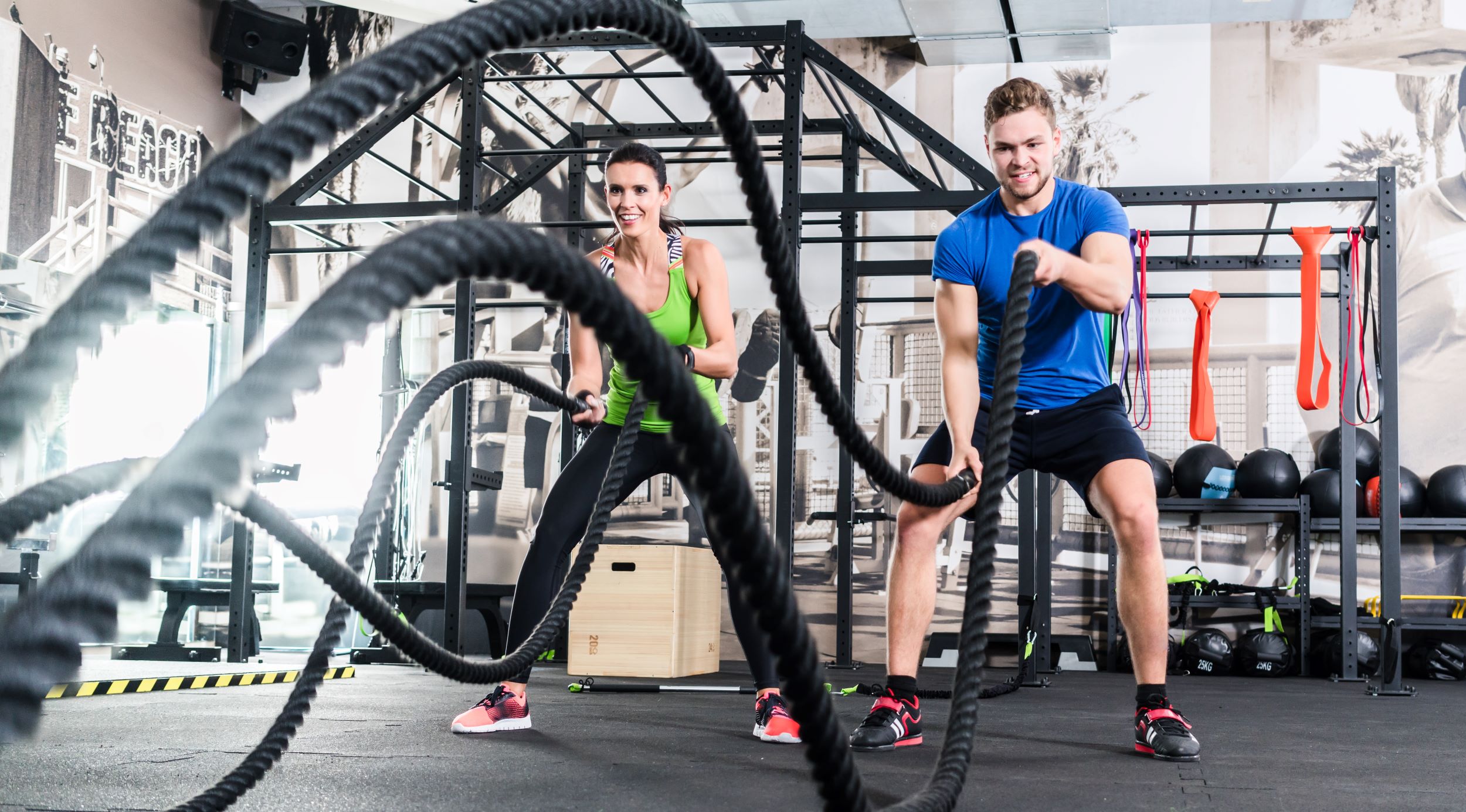Running endurance is the cornerstone of any successful running routine. Whether you’re a novice runner or a seasoned marathoner, enhancing your endurance is pivotal to running longer distances without succumbing to fatigue. But what exactly is running endurance? It encompasses both the physical stamina to keep going and the mental resilience to push through challenging moments. Building endurance requires a well-rounded approach that focuses on cardiovascular health, muscle strength, and mental fortitude.
For many runners, hitting the trails provides a natural way to boost endurance. However, the gym plays an integral role as well. With the right gym exercises, you can target specific muscle groups, improve your cardiovascular efficiency, and ultimately enhance your running performance. These exercises will not only help you run longer but also reduce the risk of injury by strengthening muscles that support your running form.
In this guide, we will delve into the best gym exercises for running endurance, offering you a pathway to elevate your running game. From treadmill workouts to strength training routines, each exercise is designed to complement your outdoor runs and maximize your potential. Embrace the journey of building endurance and enjoy the myriad benefits it brings to your overall fitness.
Visit our website to learn more and get started today! Click here.
Benefits of Gym Exercises for Runners
Incorporating gym exercises into your running routine offers a multitude of benefits that can significantly enhance your performance on the track. One of the primary advantages is the improvement of overall muscular strength. While running primarily focuses on the lower body, gym workouts allow you to target and strengthen various muscle groups, including the core, arms, and back, promoting a balanced physique.
Another significant benefit is the development of injury resistance. By engaging in strength training and flexibility exercises, runners can fortify their muscles and joints, reducing the likelihood of common running injuries such as shin splints, knee pain, and ankle sprains. Stronger muscles also contribute to better running form, which can further prevent injury.
Gym workouts also play a crucial role in enhancing cardiovascular endurance. By incorporating high-intensity interval training (HIIT) and aerobic exercises, runners can boost their heart and lung capacity, enabling them to maintain a steady pace for longer periods.
Moreover, gym exercises provide an opportunity to work on specific weaknesses or imbalances. For example, if you notice that your upper body tires quickly during long runs, targeted strength training can help build endurance in those areas. Lastly, the variety of workouts available at the gym can keep your routine exciting and engaging, preventing burnout and maintaining motivation.
Top Strength Training Exercises

When it comes to enhancing your running endurance, incorporating strength training exercises into your regimen is crucial. These exercises not only build muscle but also improve your overall running efficiency and performance.
One of the most effective exercises is the squat. Squats target the quadriceps, hamstrings, glutes, and calves, essential muscles for powerful strides and stability. To maximize benefits, consider variations like goblet squats or adding weights for increased resistance.
Another vital exercise is the deadlift. It strengthens the posterior chain, including the lower back, glutes, and hamstrings, which is critical for maintaining a strong running form. The deadlift also improves core strength, which is necessary for balance and posture.
The lunge is a versatile exercise that enhances the strength and endurance of your legs. Forward, reverse, and lateral lunges can help improve balance and coordination, making them a robust addition to any runner’s workout routine. Incorporating weights or a medicine ball can further increase the intensity and benefits.
Incorporating planks into your routine is also beneficial. Planks target core stability and strength, essential for a solid running form. Variations like side planks and dynamic planks challenge different muscle groups, offering a well-rounded core workout.
Finally, don’t overlook the importance of upper body exercises such as the push-up. A strong upper body supports efficient arm movement, which can enhance overall running rhythm and endurance.
Cardio Workouts to Enhance Endurance

Incorporating the right cardio workouts is essential for boosting your running endurance. Cardiovascular exercises improve your heart and lung capacity, allowing you to run longer distances more efficiently. Here are some top cardio workouts to consider:
One effective method is interval training. This involves alternating between short bursts of intense activity and periods of rest or lower intensity. For instance, sprint for 30 seconds followed by a minute of walking. This type of training enhances cardiovascular fitness and can significantly improve your stamina over time.
Another excellent option is steady-state cardio, which involves maintaining a consistent pace for an extended period. This can be done through activities like cycling, swimming, or using an elliptical machine. Steady-state workouts build aerobic endurance, making them a staple for any runner looking to enhance performance.
Incorporating hill workouts can also be highly beneficial. Running on an incline not only builds strength in your legs but also improves cardiovascular endurance. If outdoor hills are not accessible, most gyms offer treadmills with an incline feature to mimic this effect.
Don’t overlook the benefits of cross-training activities such as rowing or jumping rope. Both provide excellent cardiovascular workouts while also engaging different muscle groups, which helps prevent overuse injuries and keeps your routine exciting.
Lastly, consider adding circuit training to your routine. This involves performing a series of exercises in quick succession with minimal rest in between, keeping your heart rate elevated and boosting endurance.
Flexibility and Mobility Drills

While running is primarily about cardiovascular endurance and muscular strength, flexibility and mobility are equally crucial components that can enhance your running performance. Incorporating flexibility and mobility drills into your routine can help prevent injuries, improve range of motion, and contribute to more efficient running mechanics.
Start with dynamic stretching exercises such as leg swings, arm circles, and high knees. These movements warm up your muscles and joints, preparing your body for the demands of running. Unlike static stretches, dynamic stretches are performed with movement, promoting blood flow and flexibility.
Yoga is another excellent option for improving flexibility and mobility. Poses like the downward dog, pigeon pose, and warrior series target key muscle groups used in running, helping to release tension and increase flexibility. Regular practice can lead to improved posture and breathing, both of which are beneficial for runners.
Incorporate foam rolling into your routine to enhance mobility. Foam rolling helps release fascial tension and improves blood flow to the muscles, promoting quicker recovery and increased flexibility. Target areas such as the calves, quads, hamstrings, and IT band to ensure comprehensive muscle care.
Lastly, consider mobility drills like hip circles, ankle rotations, and thoracic spine twists. These exercises are designed to improve joint mobility, which is essential for maintaining proper running form and preventing overuse injuries. Including these drills in your warm-up or cool-down routine can lead to smoother, more effortless running sessions.
Creating a Balanced Gym Routine

To truly maximize your running endurance, it’s essential to create a balanced gym routine that incorporates a mix of strength training, flexibility, and cardiovascular exercises. This comprehensive approach not only bolsters endurance but also reduces the risk of injury and enhances overall performance.
Begin by scheduling strength training sessions two to three times a week, targeting major muscle groups such as the legs, core, and upper body. Exercises like squats, lunges, and planks are crucial as they build the muscle strength needed to sustain longer runs without fatigue.
Cardiovascular exercises are another vital component. While running is an obvious choice, consider incorporating other forms of cardio such as cycling, swimming, or rowing to keep your workouts varied and engaging. These activities help improve heart and lung efficiency, directly translating to better running endurance.
Don’t overlook the importance of flexibility and mobility drills. As covered earlier, these should be a staple in your routine to ensure your muscles and joints remain supple and ready for the demands of running.
A well-rounded gym routine also includes adequate rest and recovery. Listen to your body and allow sufficient time for recovery to prevent burnout and injuries, ensuring sustained progress towards your fitness goals.
Creating a balanced gym routine tailored to your personal fitness level and running goals can be transformative. **Embrace the joy of running** and explore new **trailblazing adventures** with our community as you sculpt your ideal workout plan. Visit our website to learn more and get started today! Click here.


